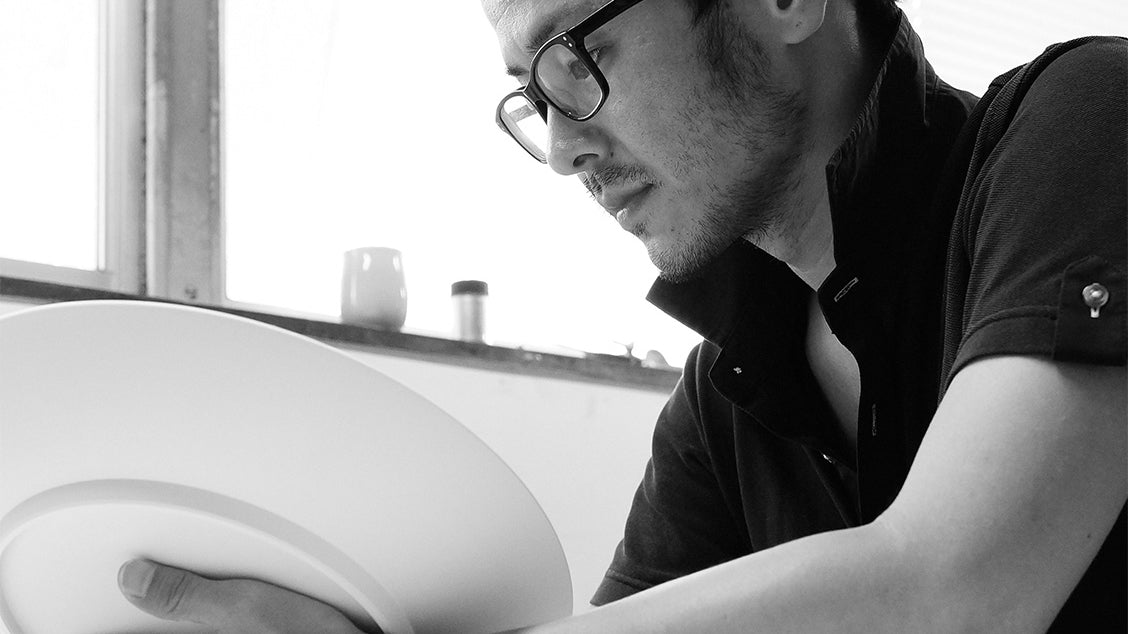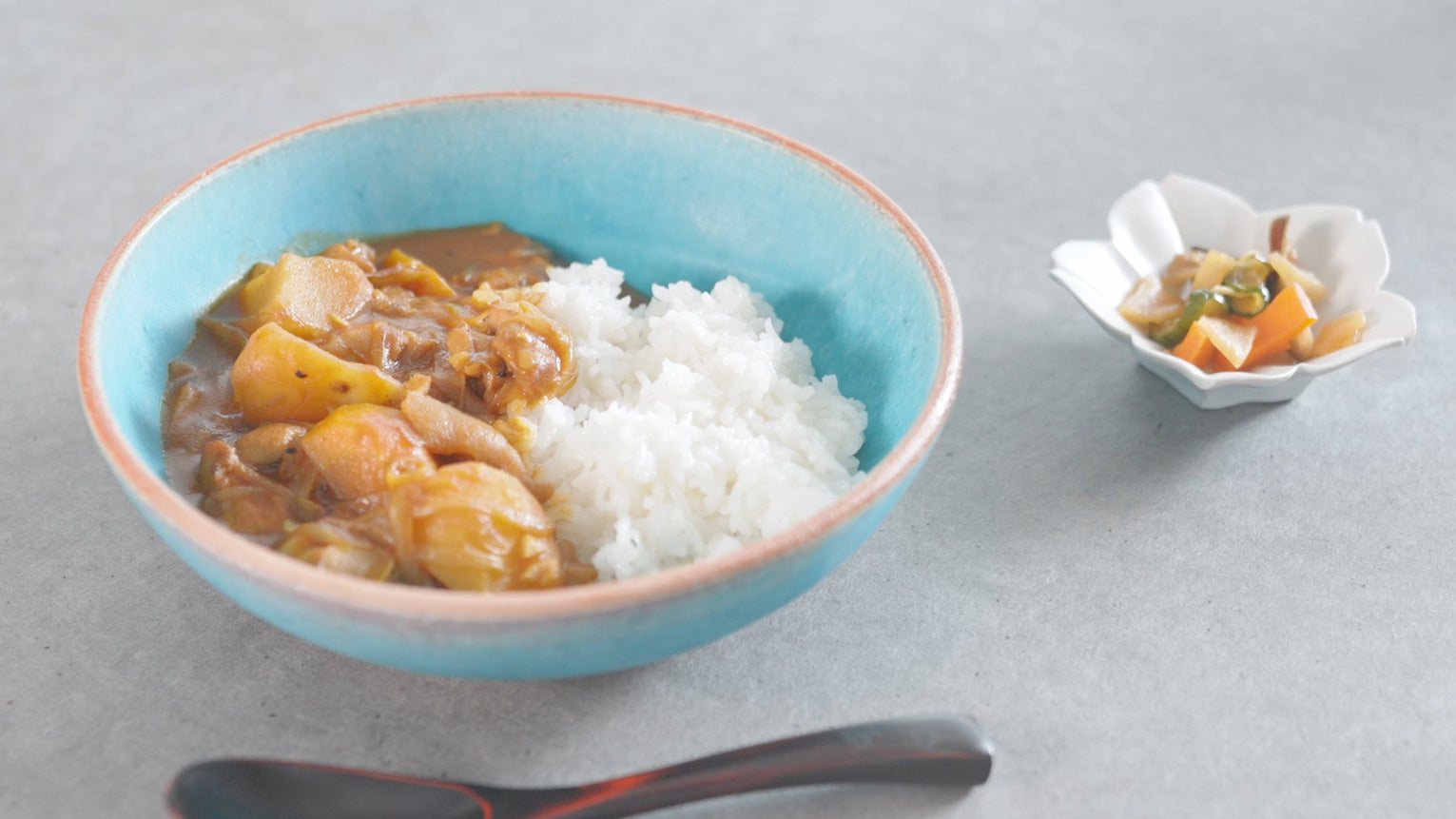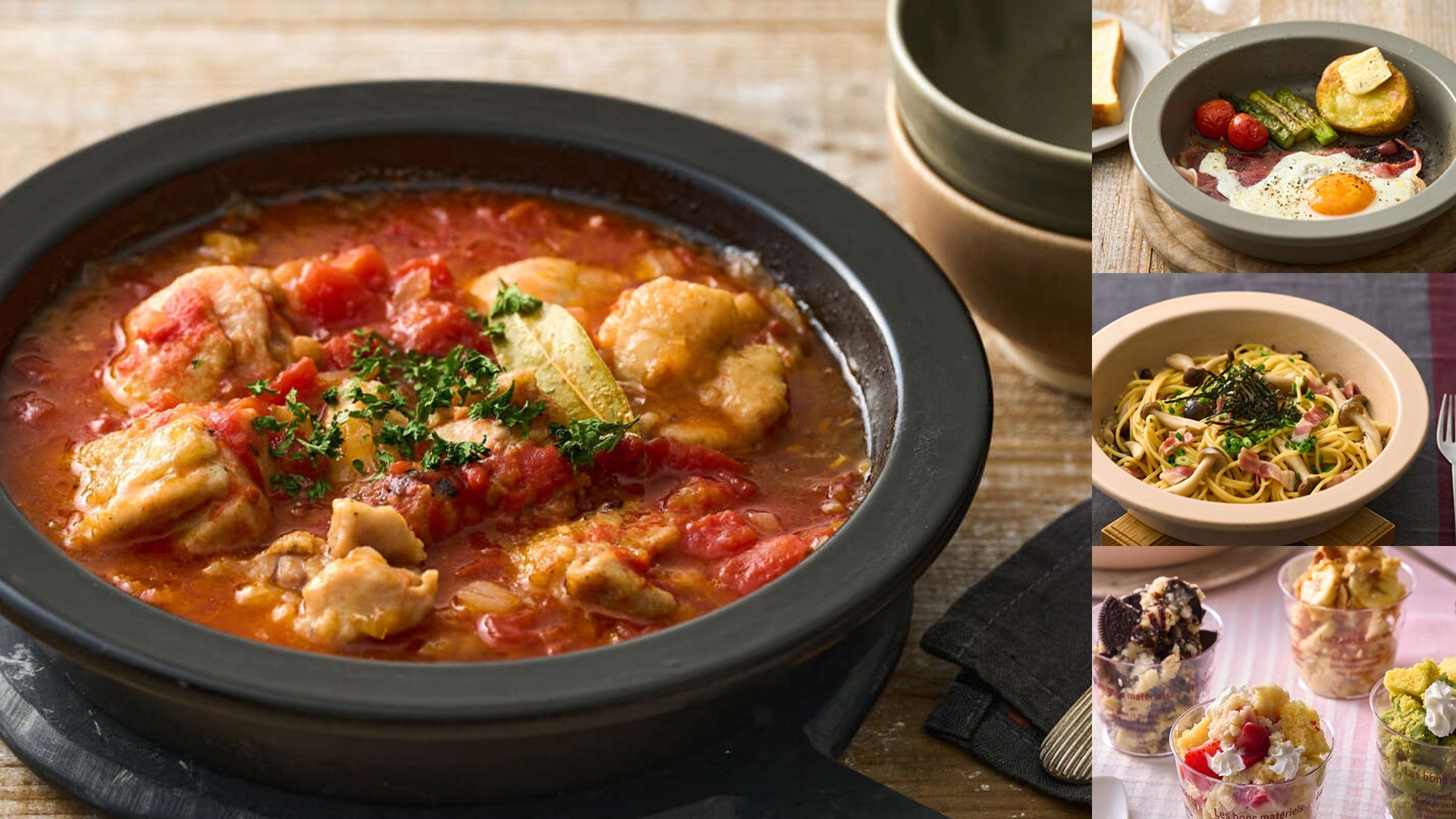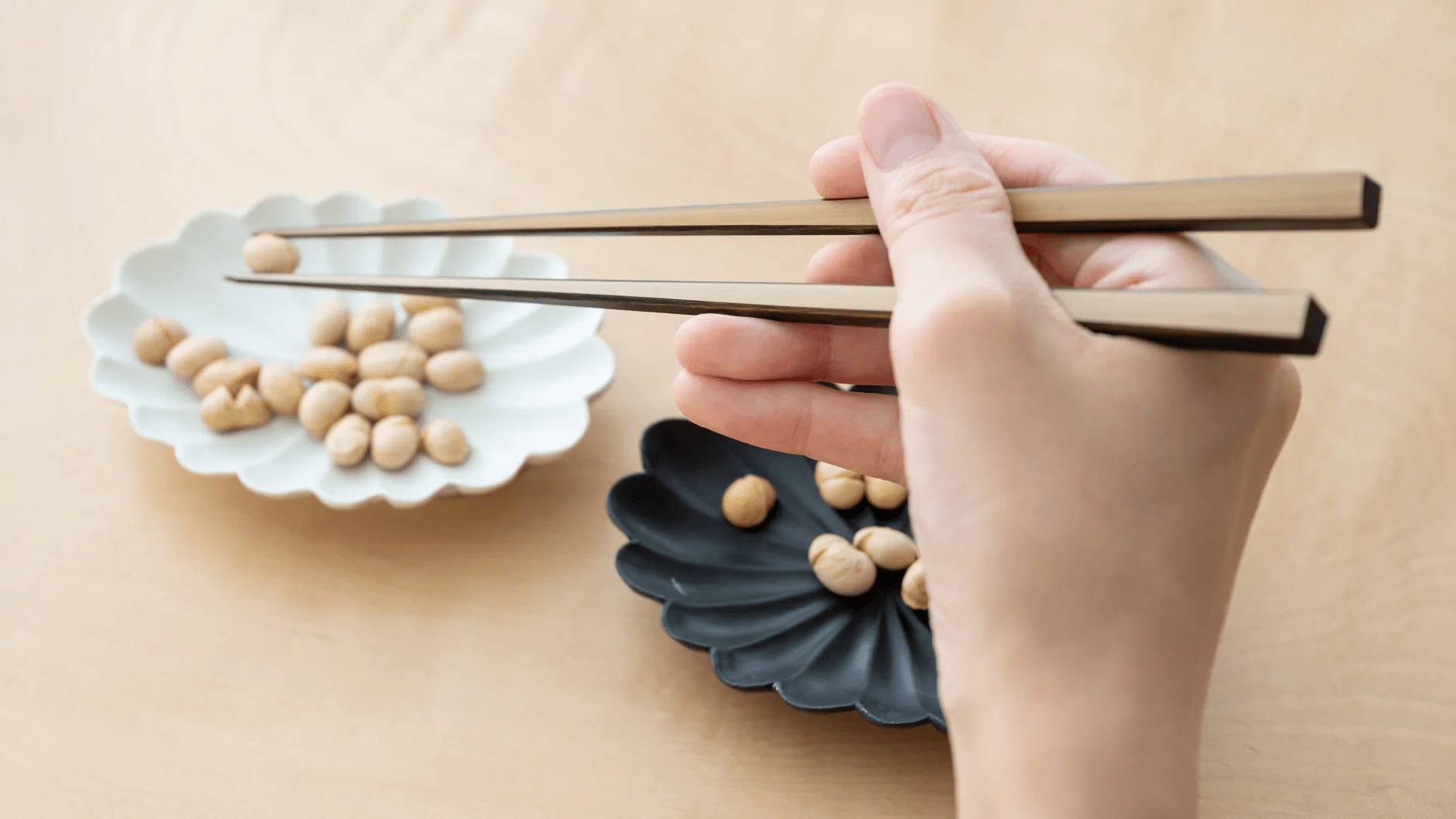
Interview with Nabeshima Ware Artist: Kawasoe Takahiko—Nabeshima Kosen Kiln
Written by Team MUSUBI
Production Story of Medaka Rice Fish Series

With its translucent glaze on the blue-jade hue of celadon, a tranquil atmosphere emanates from its glossy exterior, like the calm surface of a glistening pond. The medaka rice fish swimming leisurely in the water is depicted as realistically as if it were in nature, creating a serene feeling that makes you want to gaze at it forever.
Kosen Kiln's medaka rice fIsh series tableware has a charm that grabs your attention as soon as you lay eyes on it. The beauty of celadon porcelain, a characteristic of Nabeshima ware, and the delicate painting techniques cultivated in iro-Nabeshima ware are beautifully fused together to create a scenic world.
To gain insight into this series, we had the pleasure of speaking with Kawasoe Takahiko, who serves as the third-generation proprietor of the kiln.
tables of contents
Behind the launch of the "medaka" series
When we first asked him what inspired him to release the medaka series, he gave us a somewhat surprising answer.

It has a cool atmosphere and is truly a seasonal motif perfect for summer. The vividness of the paintings may have something to do with the fact that they depict familiar and beloved creatures.
"I'm glad that the series is loved and has now become a summer staple in our kiln."
Drawing the "medaka" rice fish
It is common for Japanese tableware to depict various natural motifs, but medaka is not that common a motif compared to goldfish, sea bream, and other fish. What are the key points in drawing them?
"I have done a lot of drawing and observation. In order to create a translucent effect, I draw a gradation from head to tail, which gives the medaka a realistic appearance under the water. However, it is very difficult to draw the same gradation every time because the paint is slightly different depending on the temperature and humidity."

The touch is very delicate, yet the brush seems to be carried without hesitation. Is there some kind of special brush used?
"The body, eyes, tail, dorsal fin, and tail are painted with separate paint and brush strokes. We are especially conscious of the gradation that can be created by skillfully moving the brush at the beginning and the end of the brushstrokes. It is also important to be conscious of the fine details of the medaka's eyes."
"If the brush strokes are not executed correctly, they will not look lively, so this is an area that I am particularly conscious of. I need to paint a beautiful, transparent medaka swimming vigorously on the surface of the water."
Production process up to painting

"When it comes to forming the pieces, we outsource to our ceramic manufacture partners. By doing so, we are able to keep costs down to a certain extent and deliver our products to a wider range of customers."
"Once the base of the porcelain is completed, we do the biscuit firing at 900°C (1652°F), glaze the porcelain, and then perform reduction firing at temperatures between 1,280°C (2336°F) and 1,300°C (2372°F). After firing, the medaka is painted and fired again in an electric kiln (800°C/1472°F) to complete the process. In total, three firing processes are performed."
The process of making ceramics is precise and demanding, requiring multiple firing while paying strict attention to temperature, humidity, and other conditions. Have you ever noticed a difference between what you had envisioned for your product and the outcome? How do you respond to this type of situation?
"There is a slight gap between before and after firing each time. Therefore, it often takes a considerable amount of time to produce a sample before it becomes a product. In some cases, it can take up to a year."
Nabeshima ware in modern lifestyle

"It gives a cool impression, so they are ideal for "Somen (Thin wheat noodles)" noodles and other dishes during the hot summer months. It is also recommended for sweets and fruits."
Are there any motifs or categories of tableware that you would like to incorporate in the future?
"We would like to increase the number of items in the medaka series and challenge new creatures other than medaka, such as goldfish."
By combining traditional practices with modern sensibilities, Takahiko endeavors to broaden the reach of Nabeshima ware. His approach is one that honors the culture of the craft while making it more accessible to a wider audience.
Kosen Kiln"Medaka Rice Fish Series"

The jade-like hue of these pieces of celadon ware are undeniably captivating. Through its transparent texture, one can imagine being encompassed by the tranquil image of a glistening body of water. The artwork itself is realistic and delicately painted, depicting the graceful figure of Medaka rice fish in motion.







Leave a comment
This site is protected by hCaptcha and the hCaptcha Privacy Policy and Terms of Service apply.